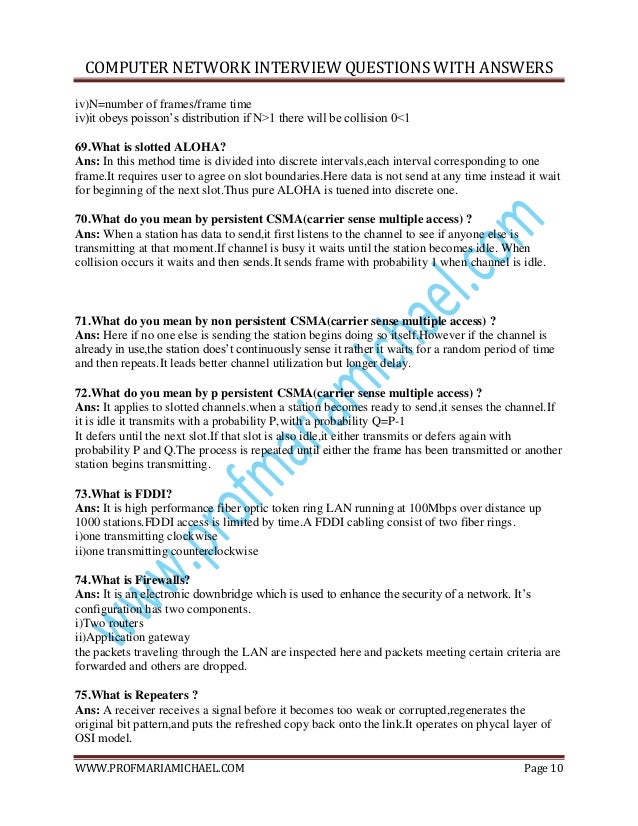The smart Trick of What to Expect in a Network Design Interview: Must-Know Questions That Nobody is Discussing

What to Expect in a Network Design Interview: Must-Know Questions
Readying for a system design meeting can be a daunting activity, particularly if you are not certain what to assume. Nevertheless, with the best preparation and knowledge of the must-know questions, you may boost your opportunities of excellence. In this short article, we are going to explore some of the essential places that are usually dealt with in a system style meeting.
1. Understanding Network Topologies
One of the key elements of system concept is understanding different system geographies. You may be asked concerns concerning a variety of types of topologies such as bus, star, band, mesh, and combination. Be prepared to detail how each geography works and their advantages and downsides.
2. TCP/IP Protocols
A powerful understanding of TCP/IP procedures is crucial for any sort of network professional. You may encounter inquiries about procedures like IP, ICMP, ARP, DHCP, DNS, and SNMP. Acquaint yourself with these procedures and be prepared to explain their functionality and how they operate within a network commercial infrastructure.
3. Network Security
Network safety is a crucial part of any type of system layout part. Job interviewers commonly ask questions related to protecting networks from exterior dangers such as cyberpunks or interior risks such as unwarranted accessibility through employees. Be all set to review principles like firewalls, VPNs (Virtual Private Networks), intrusion detection systems (IDS), security methods (such as SSL/TLS), and accessibility management lists (ACL).
4. VLANs and Subnetting
Virtual Local Area Networks (VLANs) make it possible for you to segment your system realistically while subnetting assists in dependable usage of IP addresses within each subnet. Be well prepared to discuss the function of VLANs and how they function together with subnetting to improve network performance.
5. High quality of Service (QoS)
QoS ensures that particular visitor traffic receives concern over others on a system by alloting bandwidth correctly. Comprehend the various QoS devices such as website traffic prioritization based on procedures, port varieties, or IP addresses. Be all set to talk about how QoS can be implemented to improve network functionality.
6. Network Troubleshooting
System troubleshooting capabilities are very valued in a system layout duty. You may be asked inquiries regarding typical system issues and how you would go about solving them. Familiarize yourself with tools like ping, traceroute, and Wireshark for detecting and addressing system issues.
7. System Redundancy and High Availability
Designing networks with redundancy is essential to guarantee nonstop service in situation of failures. Expect Another Point of View concerning principles like hyperlink gathering, Spanning Tree Protocol (STP), Virtual Router Redundancy Protocol (VRRP), and scorching standby hub protocol (HSRP). Understand how these technologies aid achieve high availability in a network.
8. Scalability and Performance Optimization
Systems need to have to take care of improving website traffic tons successfully while maintaining optimum functionality degrees. Be well prepared to address questions related to scalability procedures such as bunch harmonizing, hyperlink aggregation, caching web servers, information shipping networks (CDNs), and data squeezing approaches.
9. Network Monitoring and Management
Dependable system screen and management are essential for making certain smooth functions. Be prepared to go over tools like SNMP (Simple Network Management Protocol) for tracking devices, NetFlow for website traffic study, and syslog hosting servers for centralized log administration.
10. Industry Best Practices
Ultimately, recruiters may inquire concerning your know-how of industry best methods in system design. Familiarize yourself along with standards like the OSI version, TCP/IP model, ITIL platform for IT service monitoring, ISO 27001 for info surveillance management devices (ISMS), and NIST guidelines for cybersecurity.

Final thought:
Prepping for a network style job interview needs a strong understanding of crucial concepts related to network geographies, process, safety procedure, troubleshooting techniques, verboseness devices, scalability approaches, keeping track of tools, and industry best methods. By informing yourself along with these must-know inquiries discussed in this post, you may move toward the meeting with confidence, recognizing that you are well-prepared to showcase your competence in system style. Great luck!
